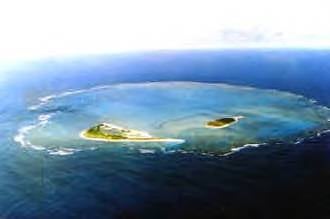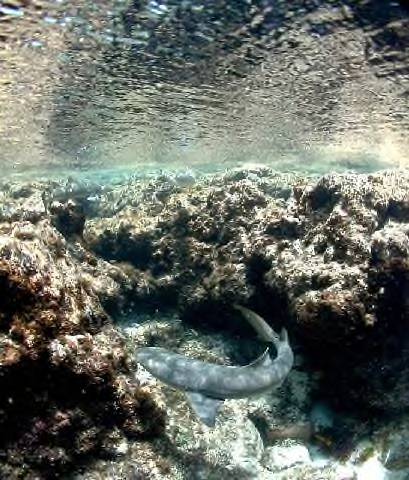Movement patterns and habitat use of lemon sharks (Negaprion brevirostris) at a nursery characterized by environmental extremes – Atol das Rocas, Brazil
Brad Wetherbee – Department of Biological Sciences, University of Rhode Island
Samuel H. Gruber – Bimini Biological Field Station, Rosentsteil School of Marine and Atmospheric Science, University of Miami
Ricardo Rosa – Departamento de Sistemática e Ecologia, Universidade Federal da Paraíba
 Movement patterns and habitat use of juvenile lemon sharks (Negaprion brevirostris) were monitored at Atol das Rocas , Brazil , an atypical nursery area for this species characterized by extreme tides and lack of seagrass flats and mangroves. Twenty-three sharks carrying ultrasonic transmitters were monitored during three trips over a total of 60 days using an array of bottom-fixed automated receivers located throughout the atoll. The monitors recorded over 13,000 detections and the majority of sharks were detected more than 100 times.
Movement patterns and habitat use of juvenile lemon sharks (Negaprion brevirostris) were monitored at Atol das Rocas , Brazil , an atypical nursery area for this species characterized by extreme tides and lack of seagrass flats and mangroves. Twenty-three sharks carrying ultrasonic transmitters were monitored during three trips over a total of 60 days using an array of bottom-fixed automated receivers located throughout the atoll. The monitors recorded over 13,000 detections and the majority of sharks were detected more than 100 times.
 During March 2000 newborn sharks (60-80 cm total length) showed restricted, but repeatable movements between small tide pools on reef flats at low tide and a small, shallow tidal creek at high tide. During September 2000 larger sharks (71-98 cm total length) were monitored and these individuals still frequented the tidal creek at high and the small tide pools at low tide, but showed more extensive movements than during the previous March. During November 2001 sharks approaching two years of age were monitored. These sharks were generally located at specific sites within the atoll during high and low tides, but continued to expand their movements to include much of the atoll.
During March 2000 newborn sharks (60-80 cm total length) showed restricted, but repeatable movements between small tide pools on reef flats at low tide and a small, shallow tidal creek at high tide. During September 2000 larger sharks (71-98 cm total length) were monitored and these individuals still frequented the tidal creek at high and the small tide pools at low tide, but showed more extensive movements than during the previous March. During November 2001 sharks approaching two years of age were monitored. These sharks were generally located at specific sites within the atoll during high and low tides, but continued to expand their movements to include much of the atoll.
 Comparison of movements of sharks indicates that they moved predictably between low and high tide locations, but locations occupied expanded and the amount of time that sharks restricted their movements within low and high tide locations declined. Lemon sharks gradually increased their activity range and habitat occupied within the atoll, but their movements reflected the available habitats resulting from extremes tides. The sharks largely restricted their movements to small isolated pools and shallow water, suggesting that predator avoidance strongly influenced habitat selection of these young sharks.
Comparison of movements of sharks indicates that they moved predictably between low and high tide locations, but locations occupied expanded and the amount of time that sharks restricted their movements within low and high tide locations declined. Lemon sharks gradually increased their activity range and habitat occupied within the atoll, but their movements reflected the available habitats resulting from extremes tides. The sharks largely restricted their movements to small isolated pools and shallow water, suggesting that predator avoidance strongly influenced habitat selection of these young sharks.
Movement patterns of lemon sharks at Atol das Rocas differ from those observed for this species in other nursery locations, where sharks continuously occupy shallow flats and mangrove habitats. Predator avoidance appears to exert a major influence on the movements of lemon sharks in their nurseries despite drastic differences in the physical characteristics of the different nursery areas. The present findings provide an example of how the physical environment may shape the biology of animals – in this case an interaction between the behavioral ecology of young lemon sharks and the physical characteristics of the nursery area.
For a pdf version of papers resulting from research at Atol das Rocas click on the link below.
 Home
Home Browse
Browse Close
Close Events
Events Maps
Maps Email
Email Brightspace
Brightspace eCampus
eCampus


